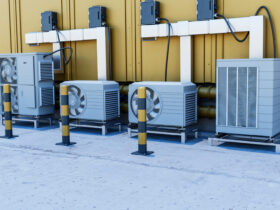As a mindful dog owner, guaranteeing the freshness and quality of your shaggy companion’s food is principal. Appropriately storing dog food saves its dietary benefit as well as forestall waste and contamination. In this step-by-step tutorial, we will direct you through the prescribed procedures on how to store dog food to keep up with its long-term freshness.
Choose the Right Container
The most important move towards appropriately storing dog food is choosing the right compartment. Decide on water/air proof holders made of durable materials, for example, without BPA plastic, hardened steel, or glass. Try not to utilize sacks, as they are inclined to tears and permit air and vermin to enter. The container’s size ought to accommodate the entire bag of dog food with some additional room. This additional room guarantees simple blending and forestall spillage when scooping out portions.
Keep the Original Packaging
Keep the original packaging to preserve important information about the dog food, like the brand, expiration date, and batch number. Remove the expiration date and batch number from the pack and tape it to the storage container. Along these lines, you can track the freshness of the food and guarantee that you’re utilizing the most seasoned sack first. Moreover, the directions given on the original packaging can direct you on proper feeding portions and storage guidelines.

Store in a Cool and Dry Place
Proper temperature and humidity assume a vital part in safeguarding the freshness of dog food. Find a cool and dry spot in your home to store the food. Note that; food deterioration can be accelerated by heat and light in areas that are close to direct sunlight. High humidity can prompt mold growth, so get the storage area far from regions prone to dampness, like the basement or laundry room. A storeroom or kitchen cupboard is an optimal area, as they offer a controlled climate. You can carry out research on dog blogs to know how to go about this.
Avoid Cross-Contamination
To ensure the integrity of your dog’s food, make sure the storage area is clean. Get the dog food far from cleaning supplies, synthetics, and other strong-smelling substances that could pollute the food’s flavor and scent. It’s likewise vital to store the food independently from human food to forestall any incidental mistakes or contamination.
Regularly Clean and Inspect
Standard upkeep of your dog food storage container is fundamental. Clean the compartment completely prior to refilling it with a new pack of food. This aids in the prevention of mold and bacteria growth. Moreover, examine the container for any indications of mileage, like breaks or broken seals. Try to replace the container to guarantee the food remains appropriately sealed and protected.
Conclusion
Appropriately storing dog food is a crucial part of responsible pet ownership. By following this step-by-step, you can guarantee that your dog’s food stays new, nutritious, and liberated from contamination. Keep in mind, investing a little time and effort into proper storage practices will go quite far in keeping up with your fuzzy companion’s well-being and prosperity.





